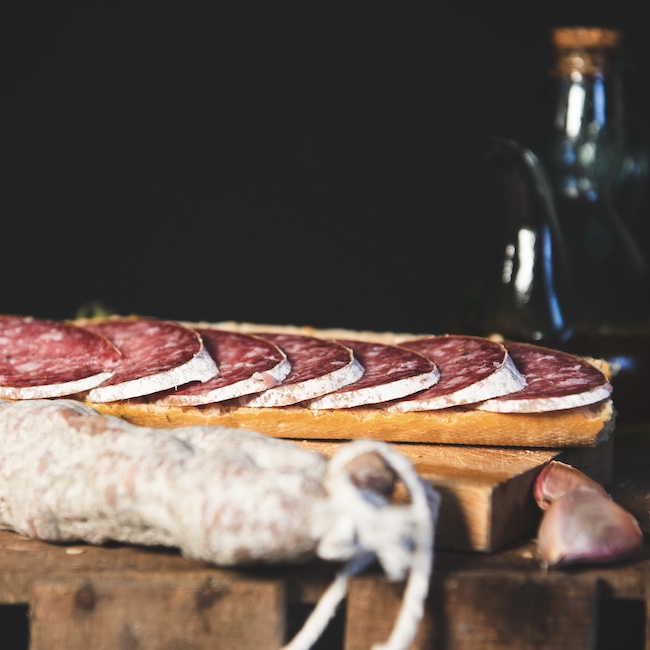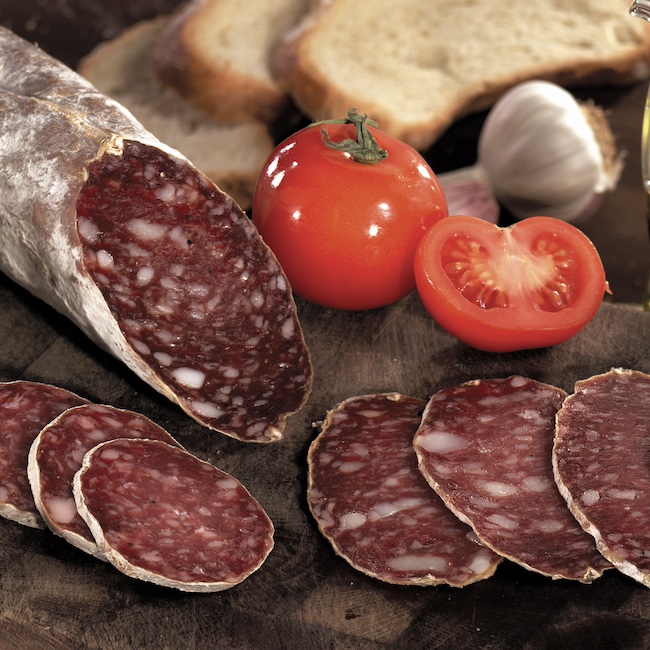.png.transform/rendition-xs/image_image%20(1).png)
Made in Vic: Salchichón at its Finest
This Catalan town is home to one of the most prized cured meats, covered by a PGI: a combination of perfect climatic conditions, a longstanding tradition, and lots of flavor

For Pons, a good Vic salchichón with PGI can be seen "when it's cut." It's then when you notice that "it has an intense, bright red color and the fat and the black pepper are visible in the form of grains, a quality that is unique to this product and gives it its identity."
Exports of Vic salchichón leave no room for doubt: it's a popular product. According to 2023 data, the most recent available, the total number of companies that produce this sausage exported almost 54,000 kilos to the European Union. France, Belgium, and the Czech Republic were the main destinations. Outside the EU, the United Kingdom and Japan are the main markets.
As far as eating salchichón from Vic goes, there's not much of a secret: it's sliced and eaten, accompanied by a good pà amb tomaquet (bread with tomato, with the very ripe tomato rubbed on toasted bread). However, there are also chefs who innovate by preparing other recipes based on this product. One example is Pep Nogué, who prepares a dish in which he mixes the salchichón, cut into sticks, with artichokes, apple, and a dressing made from olive powder, mustard, salt, and extra virgin olive oil. It can also be the base, thinly sliced, of a sandwich with cheese and caramelized onion, or served as a base for a steak tartar.
Other sausages: beyond salchichón
Although Vic salchichón is emblematic of the area, given its PGI, many other sausages are produced in Vic. The best known is fuet, which follows the same recipe as salchichón but is presented in a narrower casing, between 3 and 4 centimeters in diameter. Additionally, it's cured for a shorter period of time, which gives it a softer texture than salchichón.
Another option that is typical and different is secallona, which is narrow like fuet, between 3 and 4 cm in diameter, but longer and drier. It doesn't usually have as much outer flora, the characteristic whitish outer layer that fuet and longaniza have. Another identifying feature is the cut in the middle. Another sausage from a privileged area that turns white pork into a work of art.

When you arrive in Vic, a town in the province of Barcelona an hour outside the city, you understand many things. For many centuries, this town almost 500 meters above sea level has been the homeland of some of the best sausages in Spain. The altitude makes Vic a perfect location for sausage drying sheds, which are essential for creating the right humidity and temperature conditions for the pork to cure and acquire the right flavor. For example, this explains why there are no drying sheds in towns near the sea.
"We're in an area that's a plain between mountains, where we find fog in the early hours of the morning, which then gives way to the sun. This thermal oscillation creates an ideal climate for achieving slow, regular drying that characterizes our most emblematic product, salchichón de Vic, which has had a PGI since 2001," explains the secretary of its regulatory council, Ignasi Pons. The tradition of making sausages in this privileged area dates back many years, as is logical. According to Pons, "There are written references dating back to 1456, although they could date back to the 4th century." Originally, they were made in the homes of farmers and were intended for home consumption.
A sausage with its own personality
The unique characteristic of Vic sausages is that they're made from white pork and not from Ibérico pigs. The production process, however, marks the difference, as it is 100% artisanal in the case of salchichón. The only ingredients are the meat, once selected and minced; diced bacon; and salt and black pepper, which are the only seasonings. They are mixed together and macerated for at least 48 hours in cold storage. Following maceration, the resulting paste is stuffed into natural casings and cured in the drying sheds for at least 45 days. One of the features that differentiates it from other Spanish sausages is the lack of paprika among its ingredients, which gives it a very unique personality. The diameter usually ranges from 7 to 8 centimeters.

